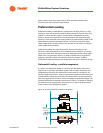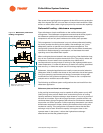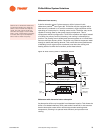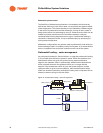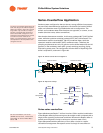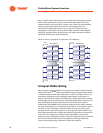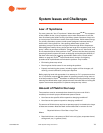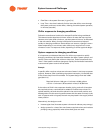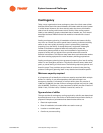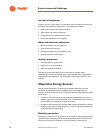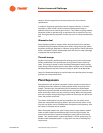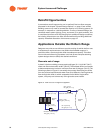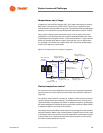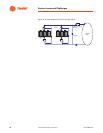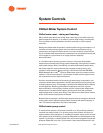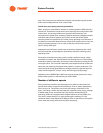
System Issues and Challenges
SYS-APM001-EN Chiller System Design and Control 81
Contingency
Today, many organizations have contingency plans for critical areas of their
business. Some deal with natural disasters and others with the loss of power
in critical areas. However, few have actually taken the time to think about
what a loss of cooling would mean to their facility. If the cooling system
failed or was suddenly grossly undersized due to weather, etc., how would
that affect business? What financial risk would be involved with a loss of
cooling?
Cooling contingency planning is intended to minimize the losses a facility
may incur as a result of a total or partial loss of cooling. It allows a building
owner to act more quickly by having a plan in place and by proactively
preparing his or her facility to accept temporary equipment. Although a
number of facilities are prepared after the construction phase, the
construction phase provides an easy and cost-effective opportunity to
prepare a facility and is a logical time to provide water stub outs and
electrical connections. This helps to keep costs down and reduces the need to
shut down existing equipment to make necessary building preparations.
Cooling contingency planning is the process of preparing for a loss of cooling
while in a non-emergency situation. This allows common sense, rather than
panic, to prevail during a critical event. The following topics are general and
broad in scope. They provide a sense of what is involved in the planning
process. Contingency planning itself is very detailed and situation-specific.
Minimum capacity required
It is important to first identify the minimum capacity required. With multiple
chillers in a facility, it may be acceptable to have less tonnage in an
emergency situation. For example, a facility’s chiller plant may consist of
1,800 tons [6,330 kW], but the minimum tonnage required may only be 1,200
tons [4,220 kW]. Therefore, it is also important to identify the plan of action if
Chiller 1 fails, if Chiller 2 fails, if Chillers 2 and 3 fail, and so on.
Type and size of chiller
The type and size of contingency cooling required by a facility are determined
by several factors. In turn, the choice of chiller determines how the facility is
prepared. Examples of parameters that determine the chiller are:
• Electrical requirements
• Ease of installation (air-cooled chillers are easier to set up)
• Location or available space
• Comfort or process cooling



